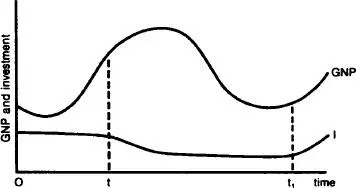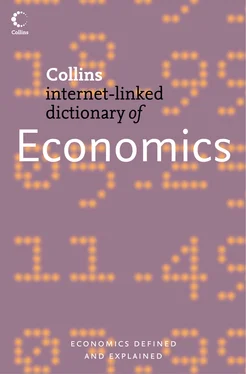Dr. Pass - Economics
Здесь есть возможность читать онлайн «Dr. Pass - Economics» — ознакомительный отрывок электронной книги совершенно бесплатно, а после прочтения отрывка купить полную версию. В некоторых случаях можно слушать аудио, скачать через торрент в формате fb2 и присутствует краткое содержание. Жанр: unrecognised, на английском языке. Описание произведения, (предисловие) а так же отзывы посетителей доступны на портале библиотеки ЛибКат.
- Название:Economics
- Автор:
- Жанр:
- Год:неизвестен
- ISBN:нет данных
- Рейтинг книги:4 / 5. Голосов: 1
-
Избранное:Добавить в избранное
- Отзывы:
-
Ваша оценка:
- 80
- 1
- 2
- 3
- 4
- 5
Economics: краткое содержание, описание и аннотация
Предлагаем к чтению аннотацию, описание, краткое содержание или предисловие (зависит от того, что написал сам автор книги «Economics»). Если вы не нашли необходимую информацию о книге — напишите в комментариях, мы постараемся отыскать её.
Economics — читать онлайн ознакомительный отрывок
Ниже представлен текст книги, разбитый по страницам. Система сохранения места последней прочитанной страницы, позволяет с удобством читать онлайн бесплатно книгу «Economics», без необходимости каждый раз заново искать на чём Вы остановились. Поставьте закладку, и сможете в любой момент перейти на страницу, на которой закончили чтение.
Интервал:
Закладка:

Fig. 1 Absolute advantage.The relationship between resource input and output.
absolute advantagean advantage possessed by a country engaged in INTERNATIONAL TRADE when, using a given resource input, it is able to produce more output than other countries possessing the same resource input. This is illustrated in Fig. 1 with respect to two countries (A and B) and two goods (X and Y). Country A’s resource input enables it to produce either 100X or 100Y; the same resource input in Country B enables it to produce either 180X or 120Y. It can be seen that Country B is absolutely more efficient than Country A since it can produce more of both goods. Superficially this suggests that there is no basis for trade between the two countries. It is COMPARATIVE ADVANTAGE, however, not absolute advantage, that determines whether international trade is beneficial or not, because even if Country B is more efficient at producing both goods it may pay Country B to specialize (see SPECIALIZATION) in producing good X at which it has the greater advantage.
absolute concentration measuresee CONCENTRATION MEASURES.
ACASsee ADVISORY, CONCILIATION AND ARBITRATION SERVICE.
acceleratorthe relationship between the amount of net or INDUCED INVESTMENT (gross investment less REPLACEMENT INVESTMENT) and the rate of change of NATIONAL INCOME. A rapid rise in income and consumption spending will put pressure on existing capacity and encourage businesses to invest, not only to replace existing capital as it wears out but also to invest in new plant and equipment to meet the increase in demand.
By way of simple illustration, let us suppose a business meets the existing demand for its product, utilizing 10 machines, one of which is replaced each year. If demand increases by 20%, it must invest in two new machines to accommodate that demand in addition to the one replacement machine.
Investment is thus, in part, a function of changes in the level of income: I = f ( ΔY ). A rise in induced investment, in turn, serves to reinforce the MULTIPLIER effect in increasing national income.

Fig. 2 Accelerator.The graph shows how gross national product and the level of investment vary over time. See entry.
The combined effect of accelerator and multiplier forces working through an investment cycle has been offered as an explanation for changes in the level of economic activity associated with the BUSINESS CYCLE. Because the level of investment depends upon the rate of change of GNP, when GNP is rising rapidly then investment will be at a high level, as producers seek to add to their capacity (time t in Fig. 2). This high level of investment will add to AGGREGATE DEMAND and help to maintain a high level of GNP. However, as the rate of growth of GNP slows down from time t onward, businesses will no longer need to add as rapidly to capacity, and investment will decline towards replacement investment levels. This lower level of investment will reduce aggregate demand and contribute towards the eventual fall in GNP. Once GNP has persisted at a low level for some time, then machines will gradually wear out and businesses will need to replace some of these machines if they are to maintain sufficient production capacity to meet even the lower level of aggregate demand experienced. This increase in the level of investment at time t 1will increase aggregate demand and stimulate the growth of GNP.
Like FIXED INVESTMENT, investment in stock is also to some extent a function of the rate of change of income so that INVENTORY INVESTMENT is subject to similar accelerator effects.
acceptancethe process of guaranteeing a loan, which takes the form of a BILL OF EXCHANGE that will be repaid even if the original borrower is unable to pay. This is done by a commercial institution which signs, that it ‘accepts’, the bill drawn up by the borrower in return for a fee. See ACCEPTING HOUSE.
accepting housea MERCHANT BANK or similar organization that underwrites (guarantees to honour) a commercial BILL OF EXCHANGE in return for a fee. See DISCOUNT, REDISCOUNTING, DISCOUNT MARKET.
account perioda designated trading period for the buying and selling of FINANCIAL SECURITIES on the STOCK EXCHANGE. On the UK stock market all trading takes place within a series of end-on fortnightly account periods. All purchases and sales agreed during a particular account period must be paid for or settled shortly after the end of the account period.
accountsthe financial statements of an individual or organization prepared from a system of recorded financial transactions. Public limited JOINT-STOCK COMPANIES are required to publish their year-end financial statements, which must comprise at least a PROFIT-AND-LOSS ACCOUNT and BALANCE SHEET, to enable SHAREHOLDERS to assess their company’s financial performance during the period under review.
acquisitionsee TAKEOVER.
activity-based costssee COST DRIVERS.
activity rate or participation ratethe proportion of a country’s total POPULATION that makes up the country’s LABOUR FORCE. For example, the UK’s total population in 2004 was 59 million and its labour force numbered 29 million, giving an overall activity rate of 49%. Similar activity rate calculations can be done for subsets of the population such as men, women, ethnic groups, etc.
The activity rate is influenced by social customs and government policies affecting, for example, the school-leaving age and the proportion of young people remaining in further and higher education beyond that age; the ‘official’ retirement age and the proportion of older people retiring early or working beyond the retirement age. Opportunities for PART-TIME WORK and job-sharing can also influence, in particular female, participation rates. In addition, government TAXATION policies can also affect activity rates insofar as high marginal tax rates may serve to deter some people from offering themselves for employment (see POVERTY TRAP). See LABOUR MARKET, DISGUISED (CONCEALED) UNEMPLOYMENT.
actual gross national product (GNP)the level of real output currently being produced by an economy. Actual GNP may or may not be equal to a country’s POTENTIAL GROSS NATIONAL PRODUCT. The level of actual GNP is determined by the interaction of AGGREGATE DEMAND and potential GNP. If aggregate demand falls short of potential GNP at any point in time, then actual GNP will be equal to aggregate demand, leaving a DEFLATIONARY GAP (output gap) between actual and potential GNP. However, at high levels of aggregate demand (in excess of potential GNP), potential GNP sets a ceiling on actual output, and any excess of aggregate demand over potential GNP shows up as an INFLATIONARY GAP.
Over time, the rate of growth of actual GNP will depend upon the rate of growth of aggregate demand, on the one hand, and the growth of potential GNP, on the other.
actuarya statistician who calculates insurance risks and premiums. See RISK AND UNCERTAINTY, INSURANCE COMPANY.
adaptive expectations (of inflation)the idea that EXPECTATIONS of the future rate of INFLATION are based on the inflationary experience of the recent past. As a result, once under way, inflation feeds upon itself with, for example, trade unions demanding an increase in wages in the current pay round, which takes into account the expected future rate of inflation which, in turn, leads to further price rises. See EXPECTATIONS-ADJUSTED/AUGMENTED PHILLIPS CURVE, INFLATIONARY SPIRAL, RATIONAL EXPECTATIONS, HYPOTHESIS, ANTICIPATED INFLATION, TRANSMISSION MECHANISM.
Читать дальшеИнтервал:
Закладка:
Похожие книги на «Economics»
Представляем Вашему вниманию похожие книги на «Economics» списком для выбора. Мы отобрали схожую по названию и смыслу литературу в надежде предоставить читателям больше вариантов отыскать новые, интересные, ещё непрочитанные произведения.
Обсуждение, отзывы о книге «Economics» и просто собственные мнения читателей. Оставьте ваши комментарии, напишите, что Вы думаете о произведении, его смысле или главных героях. Укажите что конкретно понравилось, а что нет, и почему Вы так считаете.












